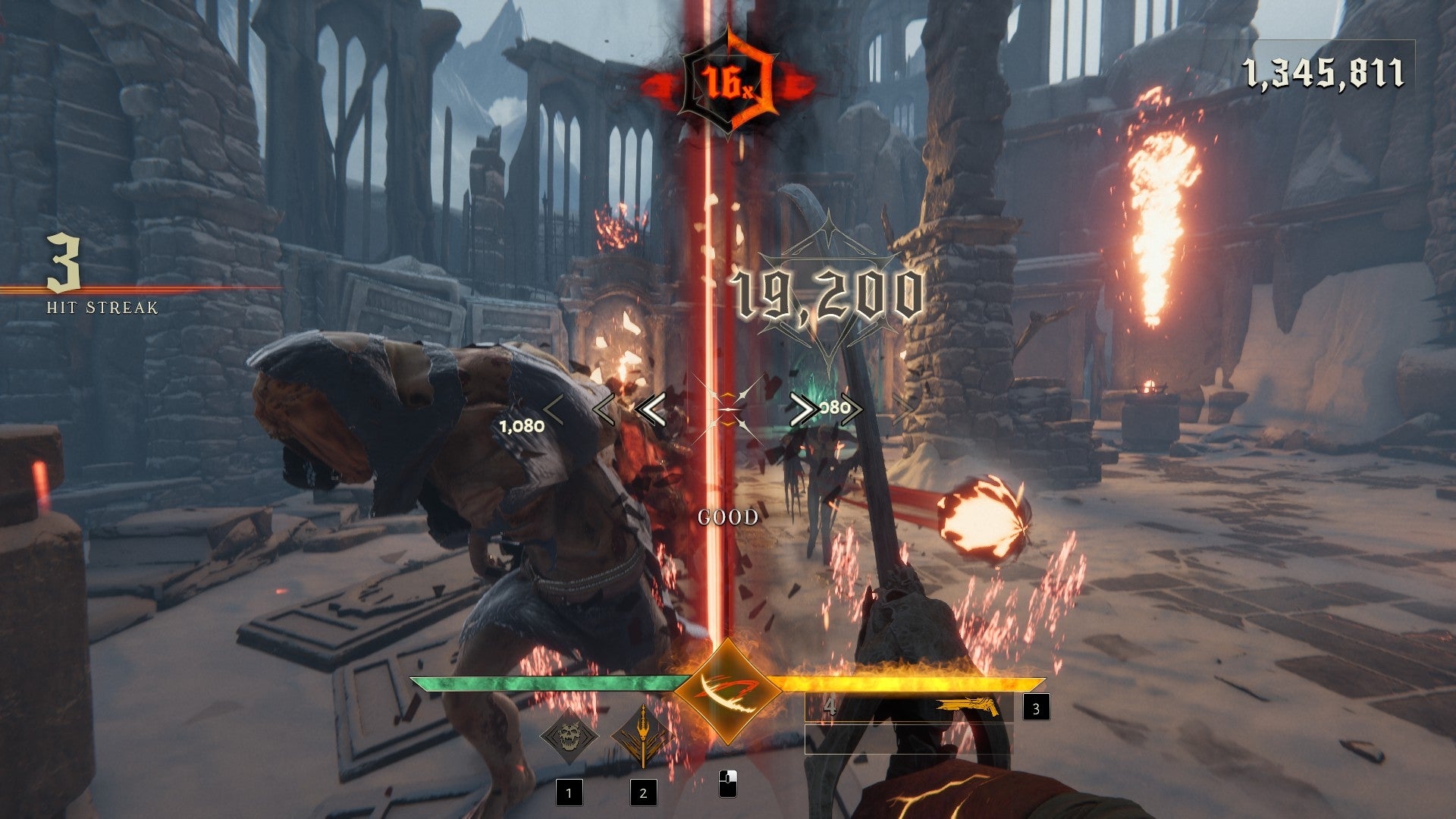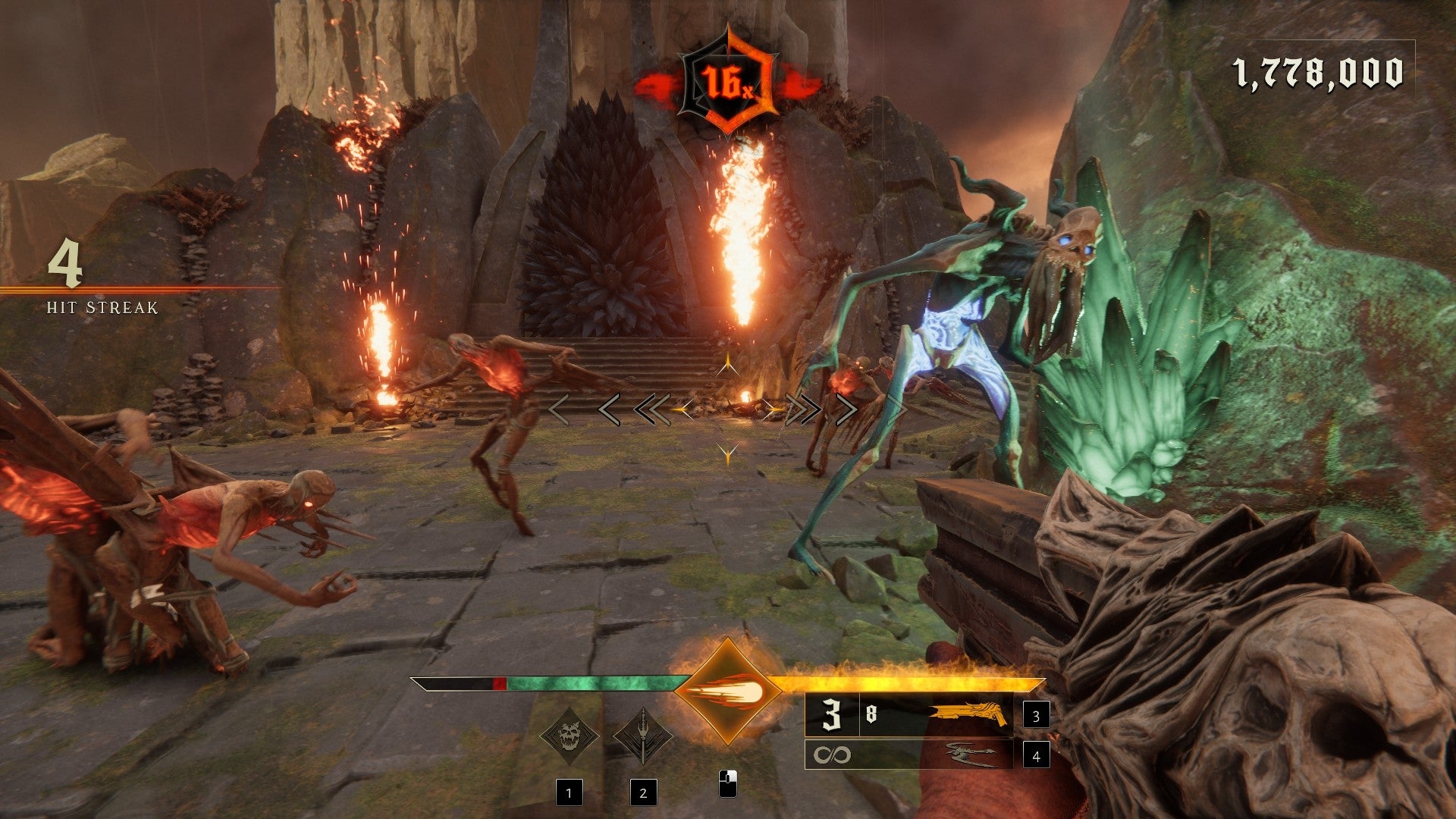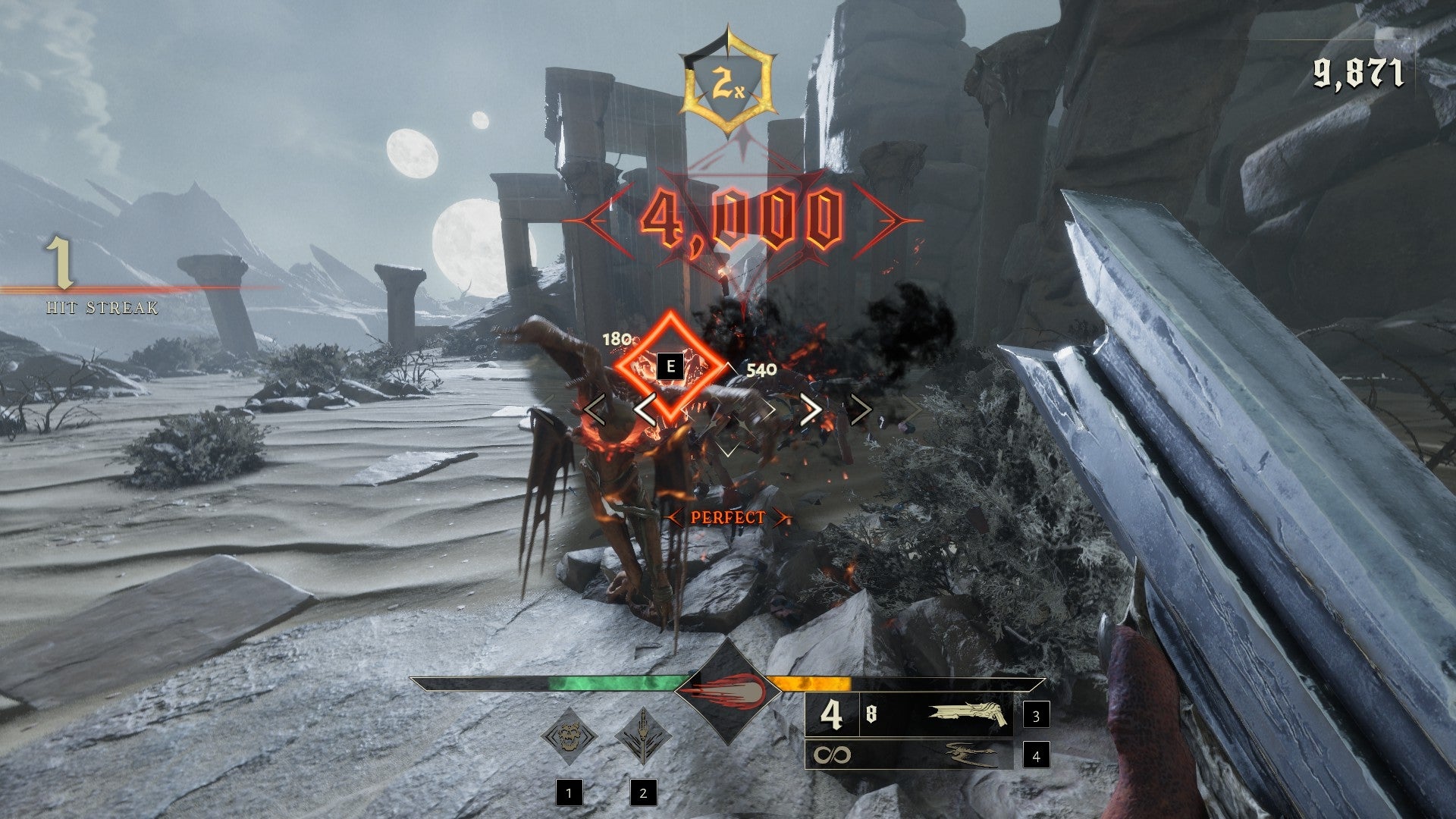Often but not always. Metal: Hellsinger’s mix of rhythm game and Doom 2016-style shooter kept me tapping my foot as I battled through hell - even as I failed regularly, and even as someone who doesn’t care for metal music. After decades of shooters inspired by Doom (1993), it’s only fair that more games crib from its modern reboot, but let’s start with what’s different. Metal: Hellsinger wants you to fire your guns (or swing your sword) to the beat. If you do so correctly, your combo meter will fill and you’ll tick from 2x to 4x, 8x and finally 16x. As the multiplier increases, two things happen: your weapons become more powerful and the heavy metal soundtrack gains more layers. With a 16x multiplier, large enemies that previously slowed you down will be felled in a single shotgun blast. This feels great, obviously. It’s also where the singing kicks in on the soundtrack - making the song feel suddenly complete, and underlining your demon-wasting spree with power vocals. In this moment, Metal: Hellsinger makes perfect sense. Enjoy the high. Repeatedly fire your gun off the beat, or fail to kill an enemy for too long, and your multiplier bar will start to empty. Importantly, on normal and easy difficulty levels, it doesn’t empty too quickly and you’ll fall one multiplier rank at a time, so your come down is never abrupt. Playing with a 4x or 8x multiplier still feels good, too, as the music remains propulsive even when incomplete and weaker enemies will continue to be eviscerated by your shotgun blasts. There are also satisfactions to be had other than remaining on beat or maintaining that multiplier. This is where the Doom (2016) comparisons come in. Damage an enemy in Metal: Hellsinger until it’s on its last flesh-pegs and you can press E to perform a finishing move which will zip you within close range, pop the demon, and restore your health. You need to kill regularly to build your power, but you will also badly need health at times. It can therefore be painful when your click-click-clicking rhythm causes you to burst an enemy outright and miss the opportunity to heal. So you’ll change. I learned quickly that a certain enemy type would be vulnerable to a finishing move after two shots of my shotgun, so instead of click-click-clicking, I started click-click-Eing. Metal: Hellsinger had effectively taught me to hit the cymbal on every third beat. Once I’d gotten the hang of this, the combo multiplier came into play again. Once I’d stepped from a 4x to a 16x multiplier, it no longer took three shots from the shotgun to fully burst that particular demon anymore, it would take just one. This left no opportunity for collecting health at all. There are two solutions. One is to switch to a weaker weapon, like the sword, which makes Metal: Hellsinger the rare game where your entire arsenal remains relevant even after it introduces more powerful weapons during its early levels. (The other basic starting weapon is Paz, a skull who can be fired to maintain your multiplier even when you’re not hitting enemies, and who also narrates the entire story.) The other solution is to keep using the shotgun but to rely on stronger enemies, who still take multiple hits, for the opportunity to perform finishing moves. This means that when you’re weak, you’re encouraged to play more aggressively and to take risks in pursuit of restoring your health. I love this. New enemies get introduced as Metal: Hellsinger’s levels progress, from leaping giants with scythes, to spindly skeletal things which dash and shoot electricity, to bugs that fly and fart yellow sludge, and so on. You’ll fight the entire bestiary again and again, in different combinations across multiple waves, in arena after arena that looks like a fire-lit cave or a crumbling ruin or some other traditional representation of hell. Each level then ends with the same boss, with new attacks and twists added to elevate the challenge. It’s structurally repetitive, but Metal: Hellsinger gives you so much to think about during combat that I hardly noticed. I wasn’t thinking about the drab environments or the recurring enemies because I was too engrossed in trying to shoot and reload on the beat while also maintaining my multiplier, building a hit streak, juggling weapons and special attacks, air-dashing around projectiles, and killing the enemies with peak efficiency. A new arena just like the old arena containing the same enemies in the same order was another chance to do all of it better. I suspect a certain kind of player will surrender to the repetition by choice. You score points during play, after all, and there are global leaderboards to climb. I look forward to watching replays of high scoring runs performed by people who truly master Metal: Hellsinger’s systems. I won’t go to those lengths myself. I did enjoy testing my skills in some of the special challenges, accessed via the menu, which give you extra constraints and reward success with new passive buffs. But once the story mode got difficult in its last couple of levels, I dropped the difficulty from Normal to Easy mode so I could finish it. I’m content with this decision. If you love Doom and you’re the kind of Guitar Hero player who wants to 100% Through The Fire And Flames, then I think Metal: Hellsinger might have you obsessed. For me - who only played Guitar Hero on Normal mode at parties, and whose only understanding of heavy metal comes from Wayne’s World - it remained an excellent five hours. Party on.


